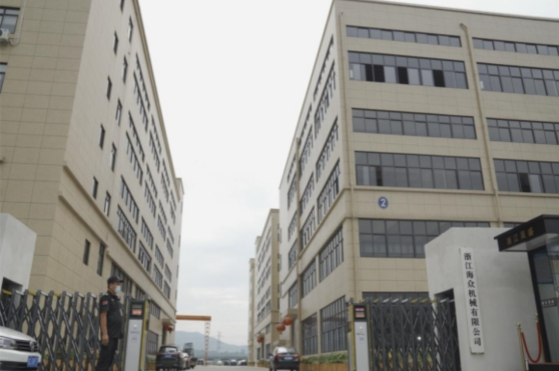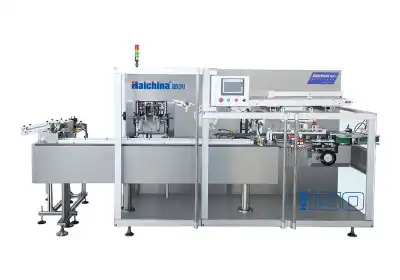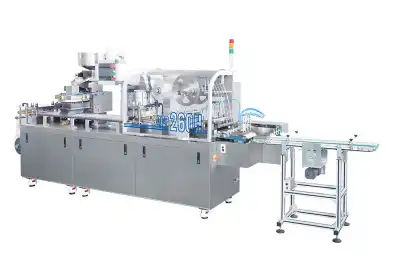Essential Maintenance Procedures for Cake Packing Machines
Regular Cleaning and Sanitization
Maintaining a clean and sanitary environment is paramount in the food packaging industry. For cake packing machines, regular cleaning is not just about aesthetics; it's a critical aspect of food safety and machine longevity. Begin by shutting down and unplugging the machine before cleaning. Remove any loose debris or cake crumbs using a soft brush or vacuum cleaner designed for food-grade environments.
Next, prepare a cleaning solution using food-safe detergents approved for use in packaging machinery. Avoid harsh chemicals that may corrode machine parts or leave residues harmful to food products. Wipe down all surfaces, paying special attention to areas that come into direct contact with cakes or packaging materials. For hard-to-reach spots, use specialized brushes or compressed air to dislodge stubborn particles.
After cleaning, sanitize the machine using a food-grade sanitizer. This step is crucial in eliminating harmful microorganisms that could contaminate the packaged cakes. Allow all components to dry thoroughly before reassembling and restarting the machine. Implement a cleaning log to track cleaning frequency and ensure consistency in your maintenance routine.
Inspection of Critical Components
Regular inspection of your cake packing machine's critical components is essential for preventing unexpected breakdowns and ensuring consistent packaging quality. Start by examining the conveyor belts for signs of wear, such as fraying edges or loss of tension. Check drive chains and sprockets for proper alignment and lubrication, especially when used in conjunction with an automatic cartoner.
Inspect sealing mechanisms, such as heat sealers or glue applicators, for any buildup of residue or signs of wear that could compromise package integrity. Pay close attention to sensors and control panels, ensuring they are clean, properly calibrated, and functioning correctly. Look for any loose connections, damaged wires, or signs of corrosion in electrical components.
Examine the product handling components, such as guides and chutes, for any damage or misalignment that could affect the smooth flow of cakes through the machine. By conducting thorough inspections regularly, you can identify and address potential issues before they escalate into major problems, minimizing downtime and maintaining packaging quality.
Lubrication and Calibration
Proper lubrication is vital for the smooth operation of your cake packing machine. Consult the manufacturer's manual for recommended lubricants and lubrication schedules. Pay special attention to moving parts such as bearings, chains, and gears. Use food-grade lubricants to prevent contamination of packaged products.
Calibration is equally important to ensure accurate and consistent packaging. Regularly check and adjust settings for product weight, package dimensions, and sealing temperatures. Use calibrated tools and follow manufacturer guidelines when making adjustments. Keep detailed records of calibration activities to track machine performance over time and identify any trends or recurring issues.
Remember that over-lubrication can be as problematic as under-lubrication, potentially leading to product contamination or machine malfunctions. Similarly, improper calibration can result in packaging defects, product waste, or regulatory non-compliance. By maintaining a proper lubrication and calibration schedule, you can optimize your automatic cartoner's performance and extend its operational life.
Preventive Maintenance Strategies for Cake Packing Machines
Implementing a Maintenance Schedule
A well-structured maintenance schedule is the cornerstone of effective cake packing machine upkeep. Begin by categorizing maintenance tasks into daily, weekly, monthly, and annual activities. Daily tasks might include visual inspections and basic cleaning, while weekly tasks could involve more thorough cleaning and lubrication checks.
Monthly maintenance might encompass more comprehensive inspections, calibration checks, and minor repairs. Annual maintenance should include a complete overhaul of the machine, replacing wear parts, and conducting thorough performance tests. Use digital tools or software to track maintenance activities, set reminders, and generate reports on machine performance and maintenance history.
Tailor your maintenance schedule to your specific production demands and environmental conditions. For instance, high-humidity environments may require more frequent cleaning and lubrication, while high-volume production might necessitate more frequent wear part replacements. Regularly review and adjust your maintenance schedule based on machine performance data and emerging issues.
Training Operators in Proper Machine Handling
Well-trained operators are crucial for maintaining the longevity and efficiency of your cake packing machine. Develop a comprehensive training program that covers not only basic operation but also troubleshooting, cleaning procedures, and routine maintenance tasks. Ensure operators understand the importance of following proper startup and shutdown procedures to prevent damage to the machine, especially when working with an automatic cartoner.
Teach operators to recognize early signs of machine wear or malfunction, such as unusual noises, vibrations, or changes in packaging quality. Encourage them to report any issues promptly to maintenance personnel. Provide hands-on training on how to perform basic maintenance tasks safely and effectively, such as cleaning and minor adjustments.
Consider implementing a mentorship program where experienced operators can guide newer team members. Regularly update training materials to reflect any changes in machine design or best practices. By investing in operator training, you can reduce the risk of machine damage due to improper handling and ensure consistent packaging quality.
Monitoring and Analyzing Machine Performance
Implementing a robust system for monitoring and analyzing your cake packing machine's performance can significantly enhance your maintenance efforts. Utilize sensors and data logging systems to track key performance indicators such as production speed, packaging accuracy, and energy consumption. This data can help you identify trends, predict potential issues, and optimize machine settings for peak performance.
Regularly analyze production data to identify any patterns or anomalies that might indicate developing problems. For example, a gradual decrease in packaging speed or an increase in rejected packages could signal wear in certain components. Use this information to refine your maintenance schedule and prioritize preventive actions.
Consider implementing predictive maintenance techniques using advanced analytics or machine learning algorithms. These tools can help forecast when components are likely to fail based on historical data and current performance metrics, allowing you to schedule maintenance proactively and minimize unexpected downtime.
Troubleshooting Common Issues in Cake Packing Machines
Identifying and Resolving Packaging Defects
Packaging defects can significantly impact product quality and consumer satisfaction. Common issues in cake packaging include improper sealing, misaligned labels, and damaged packages. To address these problems effectively, start by establishing a systematic approach to defect identification and resolution.
Create a visual guide of common packaging defects for operators to reference. This can help in quickly identifying issues as they arise. When a defect is detected, investigate the root cause thoroughly. Is it due to machine misalignment, worn components, or incorrect settings? Use a problem-solving methodology like the 5 Whys or Root Cause Analysis to dig deeper into the underlying causes.
For sealing issues, check the temperature and pressure settings of sealing mechanisms. Ensure that packaging materials are compatible with your automatic cartoner and stored properly to prevent moisture absorption or warping. Address misalignment problems by checking and adjusting guide rails, product feeders, and conveyor belts. Regularly calibrate sensors responsible for package positioning and timing to maintain accuracy.
Addressing Mechanical and Electrical Malfunctions
Mechanical and electrical malfunctions can lead to significant downtime if not addressed promptly. Common mechanical issues include worn bearings, misaligned drive components, and damaged conveyor belts. Electrical problems might involve faulty sensors, control panel malfunctions, or wiring issues.
Develop a comprehensive troubleshooting guide for your maintenance team, covering common symptoms and their potential causes. Provide them with the necessary diagnostic tools, such as multimeters, thermal cameras, and vibration analyzers, to accurately identify problems. Implement a system for logging all malfunctions and their resolutions to build a knowledge base for future reference.
For recurring mechanical issues, consider upgrading to more durable components or implementing more frequent replacement schedules. In the case of electrical problems, ensure that your facility's power supply is stable and that the machine is protected from power surges. Regular thermal imaging of electrical components can help identify potential issues before they lead to failures.
Optimizing Machine Settings for Different Cake Types
Different cake types may require specific machine settings for optimal packaging. Factors such as cake size, texture, and frosting consistency can impact how the product moves through the packaging process. Develop a comprehensive set of profiles for various cake types, detailing the optimal settings for each.
Start by creating a matrix of cake characteristics and corresponding machine parameters. This might include conveyor speed, product spacing, sealing temperature, and carton forming settings. Test these profiles thoroughly and refine them based on packaging results and product integrity after packaging.
Train operators on how to switch between these profiles efficiently and safely. Consider implementing a digital interface that allows for quick selection of pre-configured settings based on the cake type being packaged. Regularly review and update these profiles based on production data and any changes in cake recipes or packaging materials.
Conclusion
Maintaining a cake packing machine properly is essential for ensuring efficient operations, high-quality packaging, and long-term equipment reliability. By implementing regular cleaning routines, conducting thorough inspections, and following a comprehensive preventive maintenance strategy, you can significantly extend the life of your automatic cartoner and minimize costly downtime. Remember that proper operator training, continuous performance monitoring, and prompt troubleshooting are key components of an effective maintenance program. By adhering to these best practices and staying proactive in your maintenance approach, you can ensure that your cake packing machine continues to deliver exceptional results, meeting both production demands and quality standards.
Contact Us
For more information on our range of cake packing machines and expert maintenance advice, please don't hesitate to contact us at [email protected]. Our team at Zhejiang Haizhong Machinery Co.,Ltd. is ready to assist you in optimizing your packaging operations and ensuring the longevity of your equipment.





